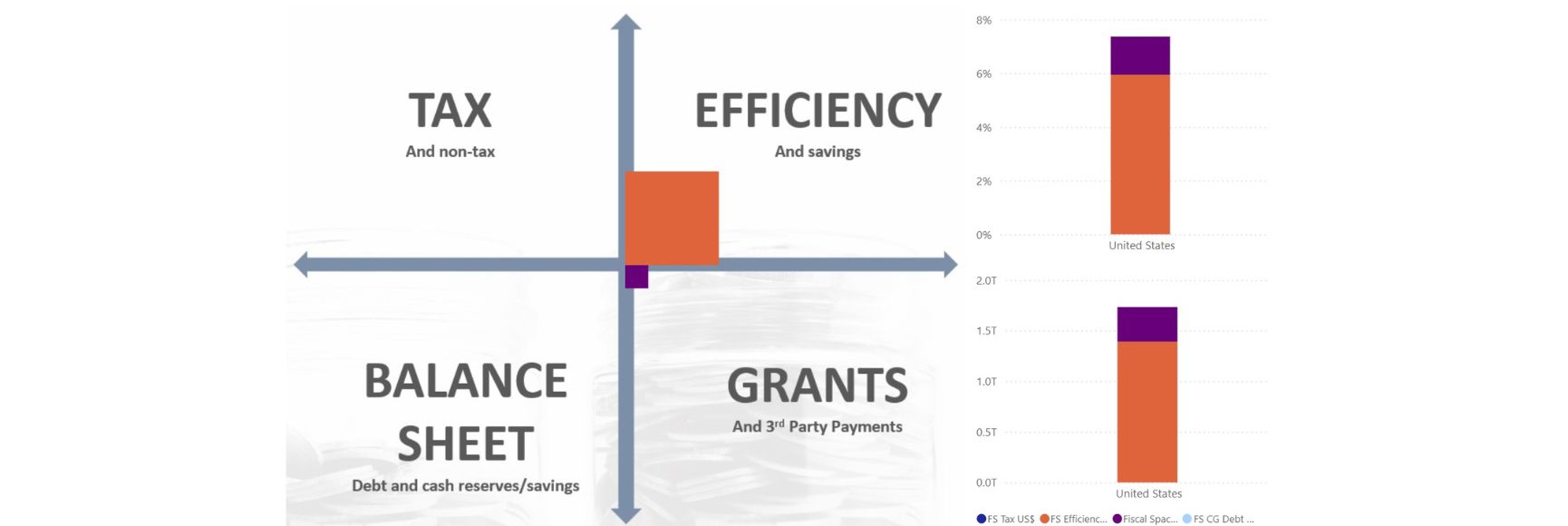Posted by Benedict Clements, David Coady, and Sanjeev Gupta. Originally published on voxeu.org
It is a daunting reality for many advanced economies that even if they manage to cut public spending today, they will continue to have huge liabilities as their populations age. This column argues that healthcare reform, no matter how politically unpalatable, will have to be a part of countries’ financial adjustment plans.
With public debt ratios soaring to levels unprecedented since the Second World War, fiscal adjustments are already underway and more will need to be done in many advanced economies (Buti and Pench 2012, Cottarelli 2012). In these economies, for example, an adjustment of an astonishing eight percentage points of GDP will be required, on average, between 2011 and 2020, and then sustained for a decade beyond that, to bring debt ratios to 60% of GDP (IMF 2012). Even this figure understates the daunting task ahead, as it does not take into account the fiscal pressures emanating from age-related spending, including health, in these countries (Standard & Poor's 2012; Gruber 2012). Healthcare reform, no matter how politically unpalatable, will have to be a part of countries’ fiscal adjustment strategies. In emerging economies, healthcare reform is equally crucial, given continued lags in health indicators and the need to expand health spending at a gradual pace to maintain fiscal discipline. These countries also have fiscal adjustment needs, but they are significantly lower than advanced economies.
In the face of these Herculean challenges, there nevertheless are reform options to tame the growth of healthcare spending in advanced economies in a way so as to minimise any potential adverse effects on the poor. In emerging economies, the challenge is to expand coverage in a fiscally sustainable manner. In our book, The Economics of Public Health Care Reform in Advanced and Emerging Economies, we describe the present and coming fiscal burden from healthcare but also the lessons in healthcare reform that can be learned from the successes of a number of countries.
Fiscal pressures from rising public health spending
Over the next 20 years, public health spending is projected to rise in the advanced economies by an average of three percentage points of GDP. Around one-third of this average increase is due to population ageing and the remaining two-thirds to what is known as 'excess cost growth' – a grab-bag for non-demographic drivers of healthcare spending including the effects of technological innovations. The projected increase is particularly large in the US, where spending will rise five percentage points of GDP. But the situation is also dire in Europe, where we expect public health spending to increase by 1¾ percentage points of GDP on average over the next 20 years, with spending expected to rise by three percentage points or more in seven European countries (Figure 1). These projections present a much less sanguine outlook than those of the European Commission’s 2012 Aging Report (EC and EPC 2012), which anticipates that spending will rise by about 0.75% of GDP over the next 20 years (Figure 2). This small increase reflects a relatively low estimate of excess cost growth, which is based on the assumption that technology does not increase costs, implying a clear break from past trends.
Public health spending pressures are lower for emerging economies. On average, public health spending in emerging economies is projected to increase by one percentage point of GDP over the next two decades. Around half of the projected increase reflects population ageing, while the remainder reflects ECG. Projected increases are higher in emerging Europe and Latin America compared to Asia.
Ingredients of successful reform in advanced economies
Reforms are needed to control spending, but these reforms must also be equitable, protecting access to basic healthcare for all who need it, especially the poor. Cost containment reforms should minimise any potential adverse effects on the poor. Most advanced economies have achieved universal access to basic health services, and health reforms should respect this safety net.
Experience suggests that effective reforms combine a mix of both macro-level instruments to contain costs and micro-level reforms to improve the efficiency of spending. Our review points to five viable options:
Budget caps. Budget caps have been effective in containing spending in many advanced countries (e.g., Italy and Sweden). However, to be most effective, they need to cover major expenditure categories and avoid unintended increases in spending not covered by the cap. Budget caps should be supported by micro-level reforms to improve efficiency, such as reforms to improve competition and choice.
Public management and contracting methods. Sub-national governments interacting and negotiating with the central government on healthcare financing and provision appears to lower healthcare costs, as in Canada and Sweden. Greater reliance on case-based payment systems, as in Germany and Italy, and managed care (gatekeeping is a key feature of managed care), as prominent in the US in some periods, can help improve the efficiency of spending.
Competition and choice. This involves allowing patients increased choice of providers and insurers, increasing the role of private provision, and increased competition among providers and insurers.
Demand-side reforms such as greater reliance on private financing and increases in cost-sharing. Australia, Canada, and France, for example, rely significantly on private insurance for services not covered by the public package. However, a greater role for the private sector needs to be combined with adequate protection for the poor and chronically ill to avoid adverse impacts on health outcomes.
Supply constraints, such as regulation of workforce and equipment and effective use of health technology assessment, as in Canada (hospital closure, mergers, and reduction in the number of beds), are associated with slower public health spending growth.
Our analysis indicates that the above-noted reforms can yield spending reductions against the projected increases during the next 20 years ranging between 0.5% of GDP and 0.1% of GDP.
Reform challenges in emerging economies
While the overall fiscal adjustment needs are lower in emerging economies than in advanced economies, health spending is also lower and health outcomes are worse in these countries (Figure 3). The central task for emerging economies is to expand coverage and improve health outcomes while learning from the experiences of the advanced economies.
The health picture varies significantly across different emerging economies. In emerging Europe, spending is relatively high as coverage of the population is nearly universal and disease patterns mirror those of the advanced economies. Given that the fiscal adjustment needs are relatively high in these countries, the challenge is to improve health outcomes and the quality of healthcare services through enhancing the efficiency of spending. In emerging Latin America and Asia, where fiscal adjustment needs on average are low and coverage is still incomplete, the challenge is to expand basic coverage to a larger share of the population without generating undue fiscal pressures over the medium term as incomes rise and health systems expand.
There are several lessons that emerging economies can learn from the experiences of advanced economies:
Improving efficiency is the key to good long-term performance. This includes, for example, getting incentives right with provider payment reforms; greater focus on primary and preventive care; and reducing administrative costs through the adoption of health information technologies. Many countries should also raise the share of spending allocated to combating infectious diseases and steer a higher share of benefits to the rural poor where health indicators are the weakest.
A single-payer system has several advantages over a multi-payer system. A single-payer system can help facilitate redistribution of revenues between regions, trim administrative costs, and achieve more economic use of resources. Equity can be better achieved in a single payer system while also allowing for competition and choice if combined with private provision.
Benefits should be limited to the most essential services. As emerging Latin America and Asia expand coverage (many of these countries are facing high labour-market informality and low revenue ratios), it is essential to restrict the benefit package to the most essential services, until capacity to finance higher public spending increases.
The private sector can play an important role in healthcare financing and provision. Private sector involvement helps promote choice and competition. The proper functioning of the private sector, however, requires strong government regulation due to the imperfections of the healthcare market.
Conclusion
Advanced economies face large fiscal adjustment needs, and containing the increases in public health spending should be an important part of countries’ fiscal consolidation strategies. Health reforms have the potential to significantly reduce health spending growth, with the most effective strategies involving a mix of macro-level controls and micro-level reforms to improve spending efficiency. Emerging economies face the challenge of improving health outcomes, and many need to expand coverage. While all emerging economies should adopt reforms to improve health system efficiency, it is particularly important for emerging Europe in light of its limited fiscal space. While in Latin America and Asia there is fiscal space to expand coverage, it should be done in such a way that it does not jeopardise long-term fiscal sustainability.
References
Buti, Marco, Lucio Pench (2012), “Fiscal Austerity and Policy Credibility”, VoxEU.org, 20 April.
Clements, Benedict, David Coady and Sanjeev Gupta (2012) (eds.), The Economics of Public Health Care Reform in Advanced and Emerging Economies, International Monetary Fund, April.
Cottarelli Carlo (2012), “The Austerity Debate: Festina Lente”, VoxEU.org, 20 April.
European Commission and Economic Policy Committee (2012), “The 2012 Aging Report: Economic and Budgetary Projections for the EU-27 Member States (2010–2060)”, European Economy N.2/2012.
Gruber, Jonathan (2012), “Program Report: Program on Health Care”, NBER Reporter Online, Number 2, 2012.
International Monetary Fund (2012), “Fiscal Monitor, Balancing Fiscal Policy Risks”, April.
Standard & Poor's (2012), “Mounting Medical Care Spending Could Be Harmful To the G-20's Credit Health”, 26 January.
Note: The posts on the IMF PFM Blog should not be reported as representing the views of the IMF. The views expressed are those of the authors and do not necessarily represent those of the IMF or IMF policy.





